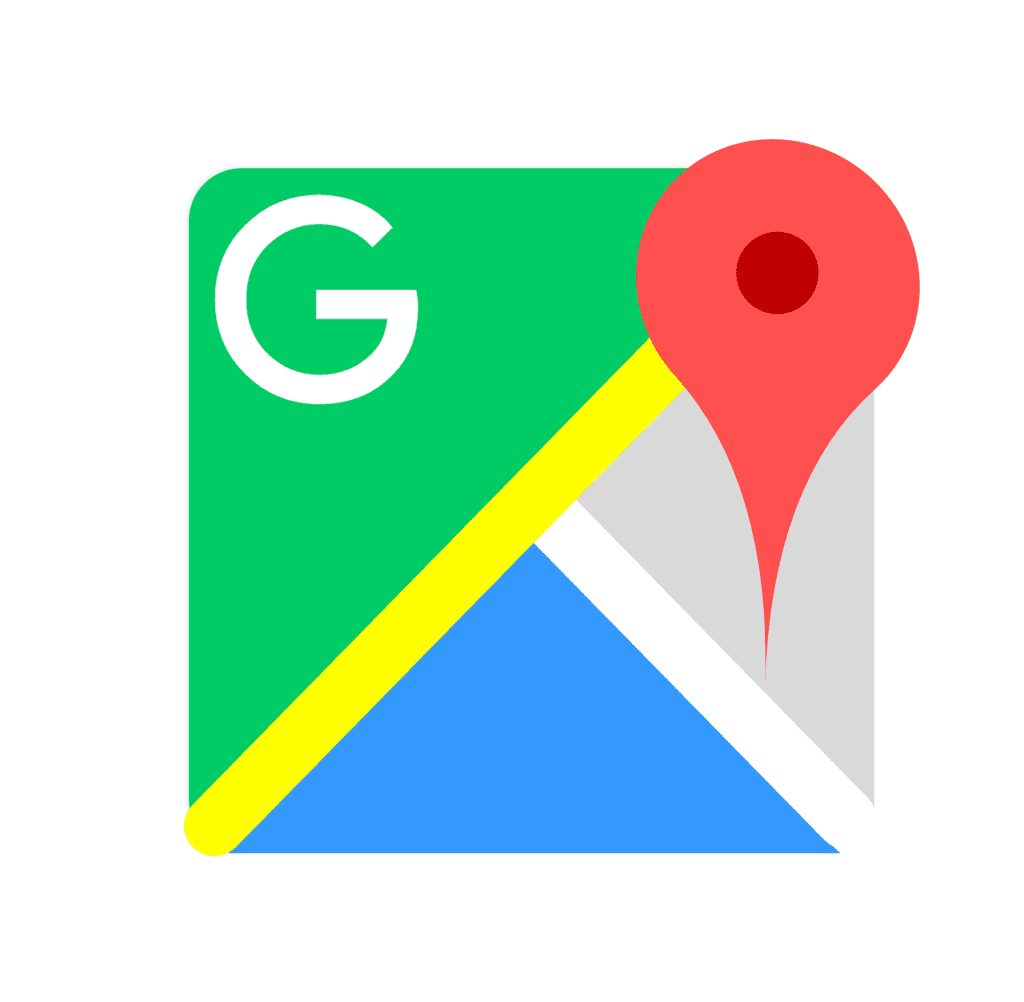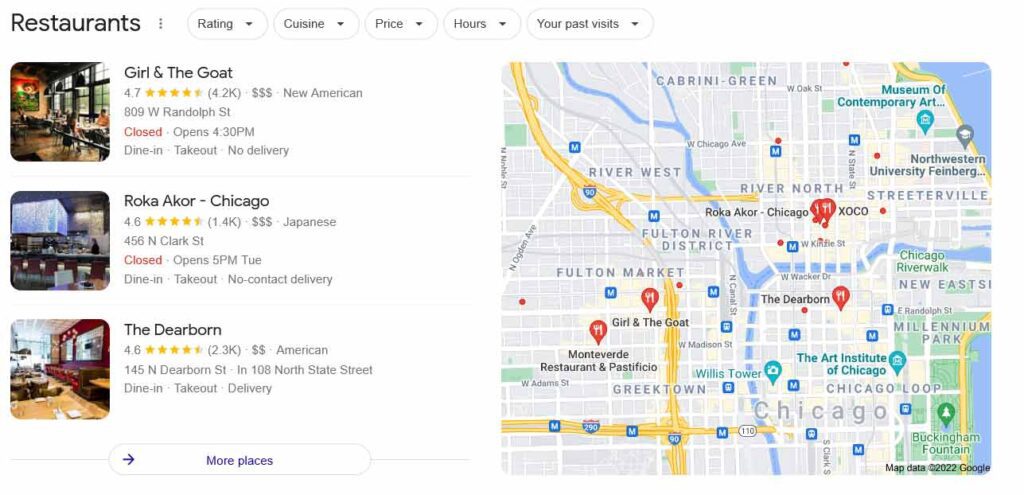Most business owners understand the importance of ranking well in Google Maps. If you are in the SEO business, search enginge position analysis isn’t the only concern. Helping your clients to rank well in Google Maps is also what you do. Even if you understand the fundamentals of local SEO, Google is constantly updating its algorithm. Keeping up with these updates is the key to outranking your competition.
Google made several changes to local search this year, and some of them affect how a business ranks in Google Maps. If you want to know how to rank better in Google Maps in 2022, you need to know about these changes.
In 2016, Google introduced what SEOs call the “map pack”, “3-pack”, or “local pack”. The new design featured a map of just three business listings. This small change dramatically affected local SEO. There were no longer 7 spots, but only an elusive three. Getting your business to rank in the map pack became the main focus of local SEO.
Why rank better in Google Maps?
It is not necessary for every business to be in Google Maps. However, for local businesses, ranking better in Google Maps is the best way to bring in more local customers and ultimately make more money.
If someone is searching for your business on Google Maps, they will most likely search “local business near me”. So, if you own a pizza restaurant, for example, if someone is looking for pizza, they will most likely search for “pizza near me”.
This is what makes ranking well in Google Maps so important. If your business isn’t in the top 3 spots, your customers may never find you. The map pack shows up at the top of the page in 93 percent of Google searches, according to SEO Clarity, which makes ranking in the map pack the best way for small businesses to be found in Google.
Every business is trying to get into this coveted spot in Google Maps. With every business vying for it, how do you get there? And what’s changed in 2022?
If you want a competitive edge, keep reading. Here is how to rank better in Google Maps in 2022.

How does Google decide which businesses rank in Google Maps?
Understanding how Google picks which businesses they display in Google Maps will help you to understand how to rank better. Google Maps was created for local businesses – not so much for online businesses.
It was mainly designed for brick-and-mortar businesses to help customers and clients locate them on the map. This is why proximity is such an important ranking factor. Google tries to show you the businesses that are closest to you in proximity.
However, just adding your business to Google Maps doesn’t automatically make your business show up first, even if you are the closest in proximity. Google uses numerous ranking factors to determine which business shows up on top. And, Google tells you exactly what they are looking for.
These are the ranking factors Google looks for:
Relevance: This means how closely your business matches what someone is searching for when they do a Google search. They determine this based on your business name, description, and what people say in your Google Reviews.
Distance: How close your business is to the person searching.
Prominence: According to Google, prominence is determined by information Google has about a business from links, articles, and directories. Google also looks at your Google reviews. Having a higher percentage of positive ratings will improve your prominence in Google.
Wonder why your reviews aren’t showing up? Check out this article.
Google Maps Ranking Factors
Ranking in Google Maps is similar to ranking in organic search. Google looks at on-page and off-page factors. However, unlike organic search, where on-page SEO is done on your website, in Google Maps the on-page SEO is done on your Google Business Profile. This is why a business can rank well in Google Maps even if they don’t have a website. Here are some of the on-page and off-page SEO factors Google uses to rank businesses in Google Maps.
Google Business Profile SEO
- GBP (Google Business Profile) Optimization
- Google Reviews
- GBP Updates
- Behavioral Signals
Google Maps Off-Page SEO
- Citations
- Website SEO
- Backlinks
- Social Signals
How to Optimize Your GBP (Google Business Profile)
The first step to ranking on Google Maps is to claim your Google Business Profile. To create a Google Business Profile go to https://www.google.com/business/. Claim your listing and verify it. Once your listing is verified, optimize your profile.
Use your keywords in your GBP name
Use your keywords in your profile name if possible. Make sure your profile name reflects what your business actually does. For example, if you own a fitness center, use a name like ABC Fitness Center instead of just ABC Company. Although including keywords in your profile name can help with SEO, Google is cracking down on business owners using keyword spam to rank well in Google Maps. Therefore, having keywords in your profile name may not be as beneficial in 2022 as it was before.
Fill out your GBP completely
Fill out every section of your GBP including your physical address, phone number, category, and attributes. Make sure to provide a description of your business using your keywords, location, and the products or services you offer. Also, add your hours of operation.
Select the best category for your business. If you are not sure which category to choose, do a search for your keyword and see what category your competitors are using. Add as many secondary categories to your profile as you can (but be sure they are relevant).
Select appropriate attributes, for example, identified as woman-owned or veteran-owned. Select a short name for your profile. And, make sure to create a free Google website, even if you have your own website. Your Google.business.site will display information about your business, your contact info, and all your GBP updates.
Add photos
Adding photos to your profile helps more than you might think. “Businesses with photos receive 42% more requests for driving directions to their location from users on Google, and 35% more clicks through to their websites than businesses that don’t have photos”, according to a Google insight study.
Post updates
Post updates on your GBP regularly. Although this does not help directly with SEO, it may help with the click-through rate. It also adds content to your Google business website if you have added one.
Ask clients and customers for Google Reviews
Google Reviews are one of the ways Google decides how popular your business is and what people in your location have to say about your business. Having positive Google reviews will improve your prominence and ranking in Google Maps.
Asking your clients and customers to leave a review for your business is one of the best ways to get more Google reviews. However, many business owners have noticed that Google is filtering more reviews, even from legitimate happy customers. Since Google knows reviews are an important ranking factor, they have tightened the ropes on fake Google reviews. If you are missing Google reviews, Google’s filtering system may be why.
Don’t just ask for reviews, reply to your customer’s reviews. According to Google, this is one way to make your Google Business Profile awesome.
GBP Behavioral Signals
If you want to rank better in Google Maps in 2022, focus on improving interaction on your Google Business Profile. Google doesn’t just look at the information on your GBP. They also look at what your customers do when they find you. For example, do they call you? Do they visit your website? Do they search for directions? These actions show Google how customers feel about your business.
Google Maps Off-Page SEO
The truth is it’s possible to rank well in Google Maps just by having an optimized GBP and positive Google reviews. However, there are other important factors that can improve your position in Google Maps. These are off-page SEO signals such as information from your website, directories, social media, articles, and backlinks.
Website Optimization
Optimizing your website will improve both your organic search results and your ranking in Google Maps. This is because Google looks for information about your business across the web to determine how they rank you. This includes the information on your website.
How to optimize your website for Google Maps
Optimize your website for local keywords. For example, if you own a real estate business, you might optimize your website for “Atlanta realtor” or “best realtor in Atlanta” or “Atlanta real estate”.
Also, add location pages or city pages for specific cities you service. This will tell Google you provide services in that city and provide more information about what services you provide for that location.
Include your name, address, and phone number on your website. Embed a Google map to your business as well. You can add this in the footer of your website or your contact page.
Add schema markup to your website. Schema markup is code that can be added to your website to tell Google more about your business. It provides information like where you are located, your phone number, your business hours, and what social media profiles are associated with your business.
Citations listing your NAP (Name, Address, and Phone Number)
One of the ways Google determines your prominence in Google Maps is based on the information it collects from links, articles, and directories. Mentions of your business’ name, address, and phone number are known as citations. Citations are generally considered listings in directories like Yellow Pages, Manta, Yelp, or Angie’s List. Local business directories or industry-specific directories are also a good way to build citations.
Backlinks
A lot of SEOs think citations and backlinks are the same things. While directories often include a link back to your website, which technically makes it a backlink, they are different. A citation is any mention of your business name, address, and phone number on another website. A backlink is a link from another website back to your website.
A backlink doesn’t always include your name, address, or phone number. It can link to your website’s home page or internal pages or blog posts. Having more backlinks will help you to rank better in local searches.
Social Signals
Having an active social media presence may improve your ranking in Google, although it may help more indirectly than directly. There is a lot of debate in the SEO community about how much social media helps with SEO or if it helps at all. However, having an active social media presence can help because it drives traffic to your website, can generate natural backlinks (from people who might not have otherwise seen your content), and encourages customers to visit your website.
What’s Changed with Google Maps and what to expect in 2022
In 2021, Google made quite a few changes to Google Maps, including making it easier for business owners to get listed in Google Maps, changing the name of Google My Business to Google Business Profile, changing the look of the map pack, and adding new features for business owners.
Google changed the name of Google My Business to Google Business Profile
On November 4, 2021, Google changed the name of its business profiles from Google My Business to Google Business Profile and made it easier for business owners to claim and verify their business information on Google Maps.
There are now two ways to get your business listed in Google Maps. You can go to https://www.google.com/business/ to create your Google Business Profile or you can simply search for your business name in Google Maps. If you don’t see it listed, search for your business address. Then click on Add your business. This will take you to the Google Business Profile page where you can set up your profile.
Google added new features for business owners
In addition, Google added several new features for business owners. You can now message your visitors directly from search, without having to log in to your business profile. You can also see your call history to see which visitors found you in Google Maps and called you from your profile.
Shop owners can now display their inventory directly from Google. Shoppers can now search for which stores have the item they are looking for in stock. This is a win for customers and shop owners as many customers check to see which stores have a product on hand before they shop there.
Google added several new attributes
There are now a wide range of attributes businesses can add to their profile, including LBTQ+ friendly, and health and safety features like “staff wears masks”. In 2022, there may be more attributes added to GBP. Be sure to check for new attributes in the upcoming year.
Google changed the way the map pack is displayed

In 2021, Google redesigned the map pack. Now when you search for a business on Google, the map is larger and more prominent than before. The businesses also appear on the left side of the map instead of underneath it.
Google rolled out the “Vicinity Update”
In 2021, Google started cracking down on spam. In the most recent Vicinity update, businesses that were dominating local search simply because they had keywords in their business name noticed significant drops in their ranking in Google Maps. A keyword in your business name is no longer as important as your prominence and proximity.
Google confirmed the algorithm update in December. Although they did not specifically say that the latest algorithm places a heavier emphasis on proximity, they did say that the update “involved a rebalancing of various factors we consider in generating local search results.”
Our November 2021 local search update has concluded. It began Nov 30 and ran through Dec 8. It involved a rebalancing of various factors we consider in generating local search results. General guidance for businesses remains the same as covered here: https://t.co/uyXFfmUEIR— Google Search Central (@googlesearchc) December 16, 2021
What the Vicinity update did, essentially, was bring proximity back as one of Google’s main ranking factors. Google has stated before that the three factors they look at are relevance, distance, and prominence.
As 2022 moves forward there may be more changes in store for Google. Overall, Google’s aim is to improve user experience. This includes making Google Maps more useful to customers using their services.
